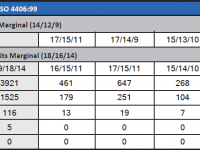https://youtu.be/ux_uiDiYuVY Comparing ISO and NAS Particle Counting Codes Most laboratories utilize ISO cleanliness codes. However, we frequently receive requests about NASA cleanliness codes. ISO Cleanliness Codes ISO cleanliness codes are the most widely used international standard for representation of the level of particulate contamination in your industrial fluid and are typically presented in codes of…
Read more
Particle Counting Cleanliness Codes







